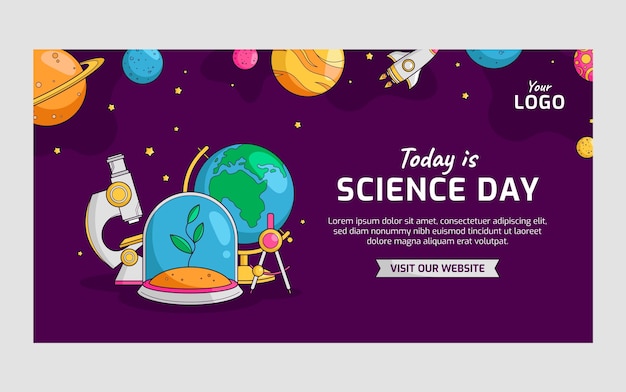Interesting Facts About Science

Did you know that a single teaspoon of neutron star material would weigh about 6 billion tons?
If you could fold a piece of paper 42 times, it would reach the moon!
A hummingbird’s heart beats approximately 1,260 times per minute.
The average person produces about half a liter of saliva every day.
The longest living cell in the human body is the brain cell.
In the vacuum of space, astronauts cannot cry because there is no gravity to make tears flow.
Honey never spoils; archaeologists have found pots of honey in ancient Egyptian tombs that are over 3,000 years old and still perfectly edible.
The Earth’s core is hotter than the outer layer of the sun.
Humans share 50% of their DNA with bananas.
The largest living structure on Earth is the Great Barrier Reef, which can be seen from space.
Sound travels four times faster in water than in air.
The average lightning bolt is about 3 miles long.
Birds are the closest living relatives of dinosaurs.
The energy released by a hurricane in just 10 minutes is equivalent to the energy of 10,000 nuclear bombs.
A teaspoon of a neutron star’s material would be so heavy that it would sink through the floor if placed on it.
There are 62,000 miles of blood vessels in the human body.
The human brain has the capacity to store up to 2.5 petabytes of information.
Diamonds can be burned in pure oxygen.
The coldest temperature ever recorded on Earth was -128.6°F (-89.2°C) in Antarctica.
Interesting Facts About Science part 2
The Earth’s atmosphere weighs about 5 quadrillion tons.
A shark’s sense of smell is 10,000 times more sensitive than a human’s.
Astronauts on the International Space Station can grow up to 2 inches taller due to the absence of gravity.
The world’s largest dinosaur footprint was discovered in Australia, measuring over 5 feet in length.
A single bolt of lightning carries enough energy to power a 60-watt lightbulb for six months.
The Blue Whale’s heart is the size of a small car.
The average person will produce enough saliva in their lifetime to fill two swimming pools.
The oldest known living organism is a bristlecone pine tree in California, estimated to be over 5,000 years old.
Humans shed about 40 pounds of skin in their lifetime.
Some frogs can freeze solid in winter and thaw back to life in spring.
Mount Everest, the highest peak on Earth, is still growing by about 4 millimeters every year due to geological forces.
Every day, the human body produces about 300 billion new cells.
Honeybees have to visit 2 million flowers to produce just one pound of honey.
It takes about eight minutes for light from the Sun to reach Earth.
The planet Saturn would float in water due to its low density.
A caterpillar has more muscles than a human.
The shortest war in history was between Britain and Zanzibar in 1896, lasting just 38 minutes.
Coca-Cola was originally green.
The first calculator was the abacus, invented in ancient China around 2,500 BCE.
The voice of Darth Vader, James Earl Jones, has never watched any of the Star Wars movies.
The first person to reach the South Pole was the Norwegian explorer, Roald Amundsen, in 19
The average person spends about six months of their lifetime waiting for red traffic lights.
The sloth moves so slowly that algae can grow on its fur.
The world’s first computer programmer was a woman named Ada Lovelace, who wrote the first algorithm in the mid-1800s.
Giraffes have the same number of bones in their necks as humans, but they are much longer.
A single bolt of lightning can heat the surrounding air to temperatures five times hotter than the surface of the sun.

